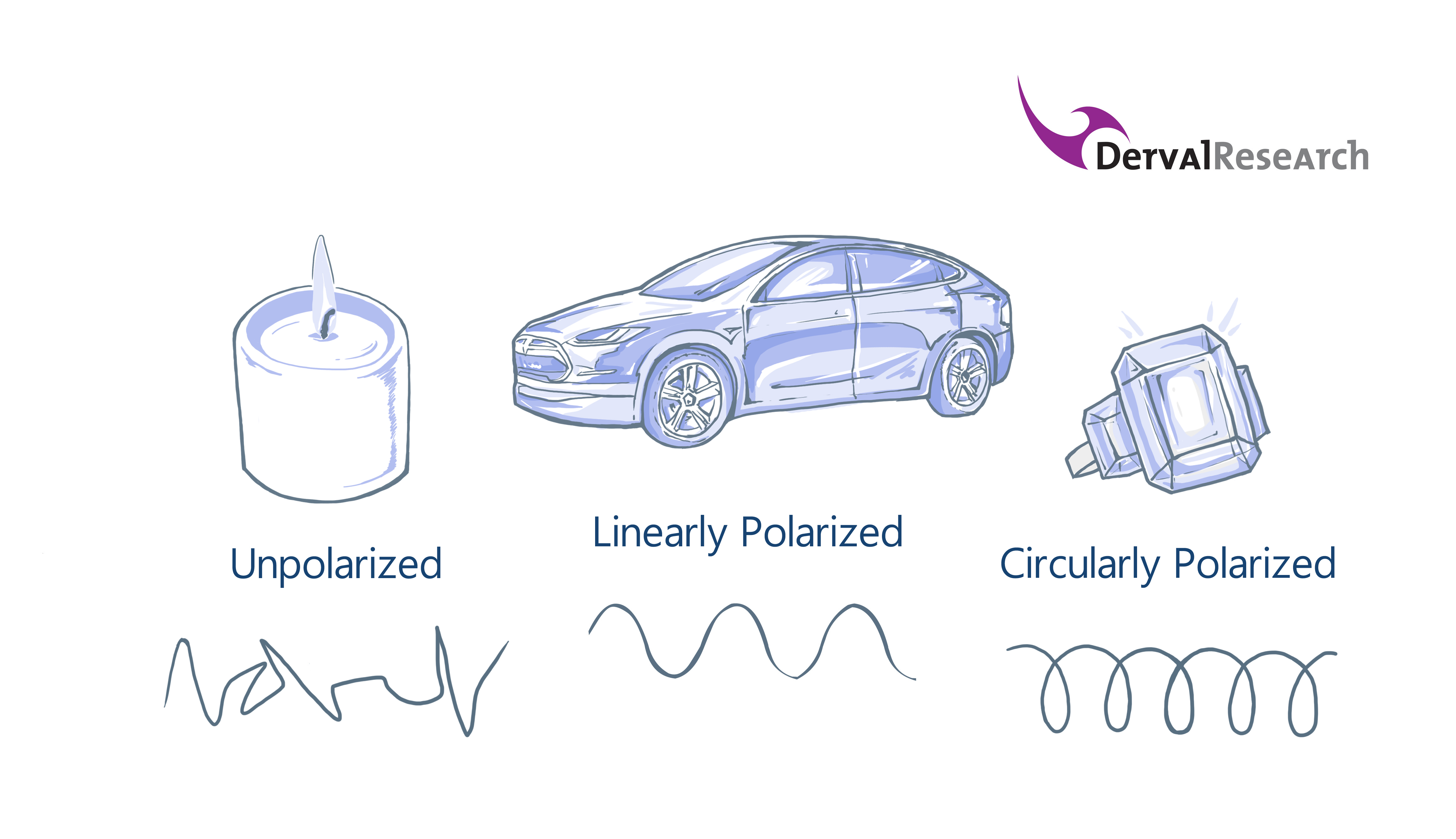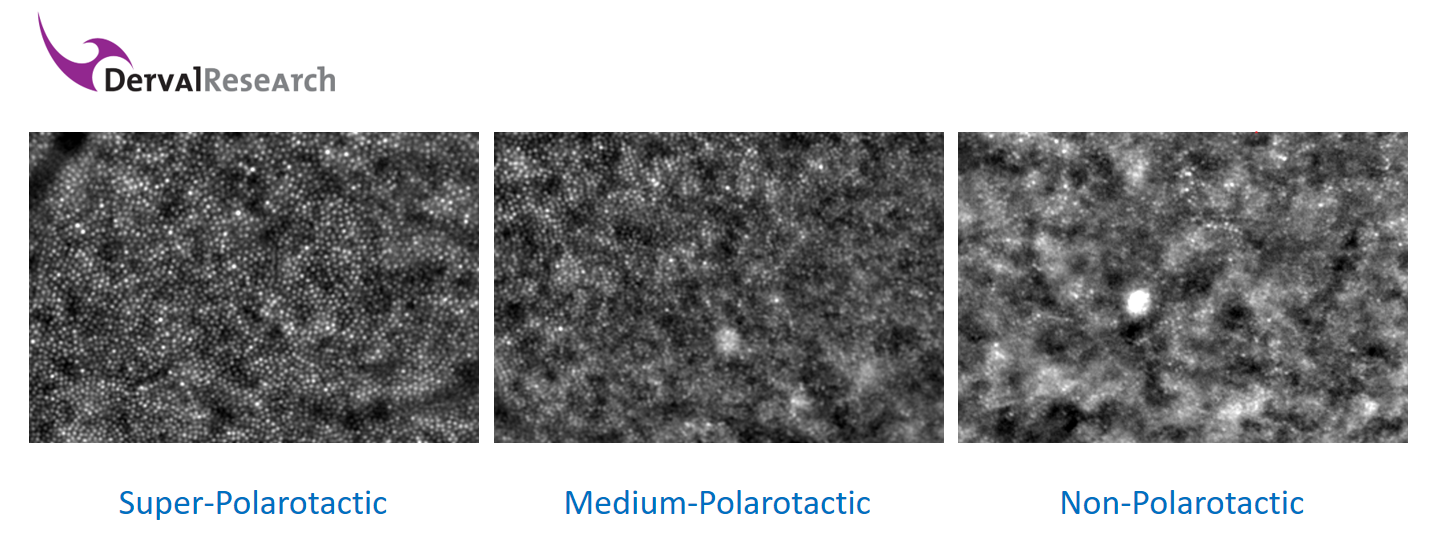Science: Luxury attracts polarotactic people like a magnet
Polarotactic people are attracted to linearly polarized light -like in a sunset on the sea, or in a shiny car
Science: Luxury attracts polarotactic people like a magnet
DervalResearch, Dubai, 12 April 2018
You overspent on the latest golden iPhone, pair of Louboutin shoes, or BMW? Don’t feel guilty, science shows you cannot help.
So says Diana Derval, neuromarketing expert, contributor for Harvard Business Review and Chair of the market research firm DervalResearch, whose newest findings are rooted in neurophysiological science. Professor Derval, who is teaching luxury and neuromarketing at Donghua University in Shanghai, at Sorbonne, and at IFA Paris, explains that luxury and shiny objects attract polarotactic people like a magnet. Her findings, already presented at the European Neuro-Ophthalmological Society (EUNOS) conference in Budapest, and at the World of Gems V conference in Chicago in partnership with the Gemological Institute of America (GIA), will be featured at Elsevier 3rd Asian Sensory and Consumer Research Symposium on 13-15 May in Kuala Lumpur.
Fig. 1. Light polarization (courtesy of DervalResearch, source: Derval D. (2018), Designing Luxury Brands: The Science of Pleasing Customers’ Senses, Springer)
“Light is an electromagnetic wave and has a direction, called polarization. It was established recently that polarized light helps birds navigate but the impact in human was still unclear. We discovered that polarized light plays a huge role in the attraction to luxury”, explains Prof. Derval.
Polarotactic people are attracted to linearly polarized light -like in a sunset on the sea, or in a shiny car (especially black or red cars, as they happen to reflect light similarly to how water would do) and to circularly polarized light- like in stars or in diamonds. What makes us polarotactic, and more tempted by luxury items? Diana Derval found answers literally looking into our eyes, with the help of the Imagine Eyes in-vivo retinal camera rtx-1e: luxury and non-luxury shoppers apparently present different retinal mosaics with variations in the orientation of their photoreceptors.
"Non-polarotactic people have many photoreceptors oriented in the same direction and seem therefore irritated by polarized light as it fires too many photoreceptors at the same time. They tend to avoid shiny objects." explains Professor Derval.
Fig. 2. Polarotactic Profiles (courtesy of DervalResearch, source: Derval D. (2018), Designing Luxury Brands: The Science of Pleasing Customers’ Senses, Springer)
Fig. 3. Retinal Mosaic per Polarotactic Profile (measured by DervalResearch with Imagine Eyes in-vivo camera rtx -1e, courtesy of DervalResearch, source: Derval D. (2018), Designing Luxury Brands: The Science of Pleasing Customers’ Senses, Springer)
In her forthcoming book “Designing Luxury Brands: The Science of Pleasing Customers’ Senses”, Diana Derval explains how brands like L’Oréal, Swarovski, Moncler, Louboutin, Tiffany & Co, Sofitel or BMW, manage to appeal to different polarotactic profiles. Among the other fascinating findings shared in the book, we can cite the Derval Color Test ®, taken by over 10 million people, and that decodes how we see colors and why fashionistas prefer black and white with a pop of color.
The book comes with revelations about luxury and the perception of scents, vibrations, and also bits of anthropology of luxury, when Derval profiles her “bag bitches” personas or unveils the truth about male-to-male competition and iPhones. The notes of humor, exclusive interviews, and hands-on frameworks make the read vivid and relatable. Philip Kotler, who endorsed Derval’s previous book “The Right Sensory Mix: Targeting Consumer Product Development Scientifically” accepted to read an early copy and shared: “ Once again, I am very impressed with Diana Derval’s new book. Through lively case studies, powerful marketing tools, and inspiring neuroscientific findings, she manages to explain the whys behind luxury mysteries. Designing luxury brands is a must read for both industry leaders and learners.”
In the luxury milieu too, top managers from leading apparel to automotive brands admit that Derval proposes a deep and well documented research, finally explaining the science behind our attraction to luxury. Annie Ho, General Manager for Greater China at Stella McCartney highlights: “ I often fail to find the scientific explanation of many happenings of the world of luxury. This sometimes frustrates me. However, Professor Derval gives me faith in the luxury industry because she brings to the table scientific tools and approaches to creating, developing, and revamping luxury brands.” The CEO of the rising luxury brand DS Automobiles Yves Bonnefont is also enthusiastic: “Luxury is first and foremost an emotion. This book will help create this emotion and unlock endless opportunities, through a deep understanding of customers”, and proud to host at DS World Paris on 17th of May 2018 evening a special event for the launch of Derval’s new book.
Press Contacts (for book copy, interview, scientific poster, book launch invitation, and more):
Prof. Diana Derval, diana@derval-research.com, +49 151 2009 5344
Sakthi, sakthi@derval-research.com, +971 4 311 6735
DervalResearch
5th Floor | The Fairmont Dubai | Sheikh Zayed Road
Dubai - UAE
Tel: +971 4 311 6735
www.derval-research.com
Book page with Messenger Bot: https://www.facebook.com/designingluxurybrands/
To check and order the book: http://www.springer.com/book/9783319715551
Press release distributed by Pressat on behalf of DervalResearch, on Thursday 12 April, 2018. For more information subscribe and follow https://pressat.co.uk/
Gold Diamonds Cars Luxury Neuromarketing Fashion Jewelry Magnetic Kotler Louboutin Iphone Anthropology Status Consumer Behavior Entertainment & Arts Media & Marketing Motoring Retail & Fashion Travel & Tourism Women & Beauty
Published By

+3726027208
press@dervalresearch.com
https://www.dervalresearch.com
Prof._Diana Derval, diana@dervalresearch.com
Visit Newsroom
You just read:
Science: Luxury attracts polarotactic people like a magnet
News from this source:





